I had the great honor of conducting an interview with Prof. Dr. Peter Berthold on 06.01.2017. He was the director of the Radolfzell Ornithological Institute for many years, is one of the world’s leading ornithologists and has written several books. I spoke to him about bird feeding and the value of tit dumplings. Together with his wife Gabriele Mohr, he has written a book on the subject: Feeding birds, but the right way. This book is the classic in the field of bird feeding.

My question: What is the ideal bird feeder?
The ideal bird feeder is basically quite simple. If someone wants to take the simplest route, i.e. bird feeding, okay, I’d like to do that, but I don’t want to go to a lot of trouble and I don’t want to read any clever books, then that would be the method of choice:
MEISENKNÖDEL — 365 days a year.
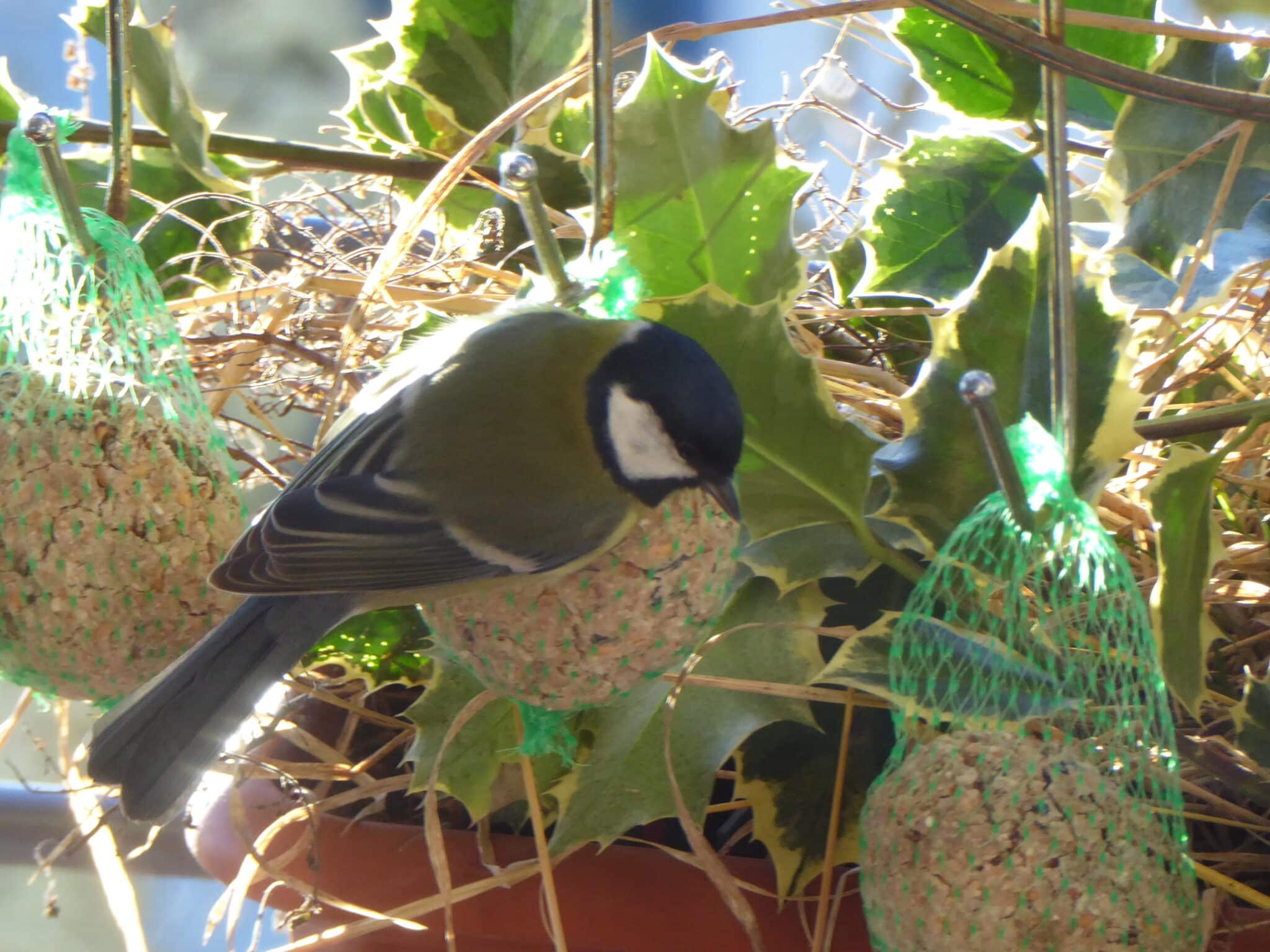
Then, interestingly, you will find that most of the MEISENKNÖDEL are not eaten in winter, not at this time of year, but in summer. This can be about 30 to 100 times what is eaten in winter. If we look in our little book, which I wrote together with my wife Feeding birds, but the right wayThere is a graphic in there of the large feeding stations we have maintained. You can see very clearly that in summer, let’s say 100 MEISENKNÖDEL are consumed and in winter it’s just 2. That’s not surprising at all, because in summer so much has to be flown, so much energy is consumed.
MEISENKNÖDELN contains the most important thing that birds need all year round. Namely fat, which we offer them as additional food to the food they look for themselves. And it contains a small amount of grains, and some dumplings even contain dried insects. And this fat is particularly important in summer because there is so much flying. The bird’s flight muscle — the large pectoral muscle, the one we like to eat with chicken or Christmas goose — this muscle is powered exclusively by fat. This means that even if a bird eats oatmeal or small grains at the feeder, it must first convert these carbohydrates into fat. And only the fatty acids that are then present in the body can then be burned in the breast muscle. So if you offer the birds fat, they can burn it directly.
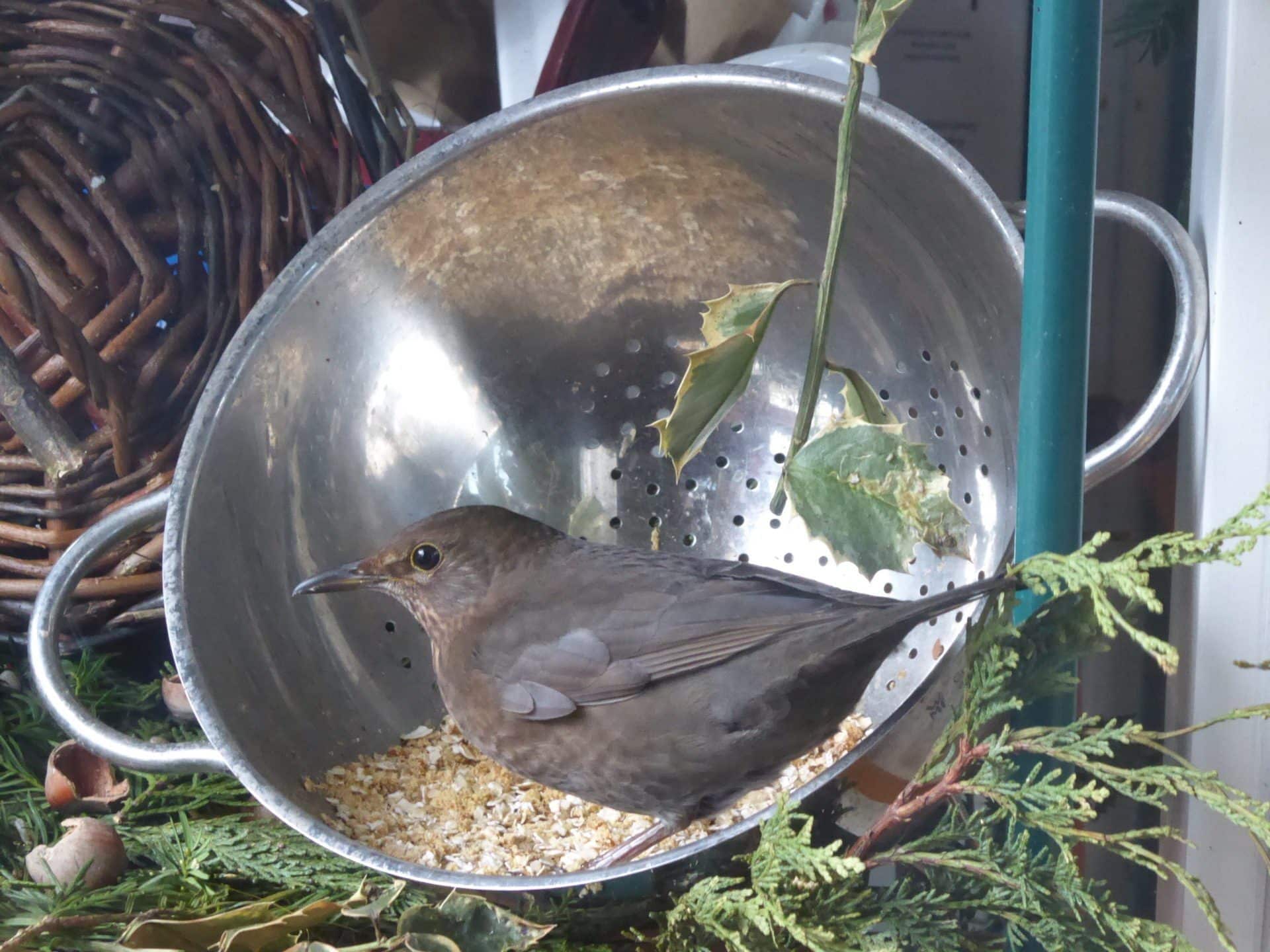
MEISENKNÖDEL are the simplest. But most people say that we want to put in a bit of effort. And then 3 types of feed are actually important: The MEISENKNÖDEL we have already mentioned. The second would be a MIXED GRAIN FEED from large and small seeds such as sunflower seeds, hemp, poppy seeds, fine seeds such as thistle seeds etc. Nowadays there are wonderful feed mixtures from bird food manufacturers in various forms. These can also be put together by pet stores, Raiffeisen, cooperatives. And thirdly, a so-called FAT FOODThis usually consists of crushed cereal flakes — the finer, the more tender, the better. They are enriched with cooking oil or fat. And they are eaten very, very readily, especially by soft feeders such as robins, wrens and dunnocks, i.e. birds that are unable to open any hard-shelled kernels. These three things are the ideal bird food.
I repeat:
1. MEISENKNÖDEL — 365 days a year
2. mixed grain feed for the various grain lovers
3. fat feed, which consists mainly of crushed cereal flakes and is enriched with oil or fat.
This would be the ideal bird feeder.
Speaks expert Prof. Dr. Peter Berthold. He is the author of this bestseller and classic in the field of bird feeding.
Fat balls from the discount store?
I asked whether the bird food available in the discount store was of sufficient quality. He responded positively. Bird food bought in discount stores can be bought with a clear conscience.
Note from me: We can ask our conscience how sensible conventionally produced bird food is, which damages and decimates our field birds, insects and other wild animals with high pesticide use.
No fat balls with plastic netting
I would like to add that I have not been using plastic-wrapped fat balls since July 2017. I have had very good experiences with this metal container, which holds fat balls without plastic. I am happy about every balcony owner who starts to feed the birds, even with plastic fat balls at the beginning, because they are the easiest to buy. The main thing is to start. Later, you can buy fat balls without these plastic nets and use these fat ball holders.

High quality lining
You can get high-quality food, nesting boxes, accessories and plants from the full-service provider Vivara nature conservation products. This store is recommended by NABU and LBV.
Tit dumplings without plastic net
Tit dumplings without plastic net with insects from Pauls Mühle
For the more advanced, it works without tit dumplings. Cut a block of vegetable fat into cubes and place these cubes in the feeders. All the birds, including the crows, will help themselves to them.
Another option is to mix rolled oats and coarse meal with rapeseed oil, only stir gently, it must not stick together. This can be done very quickly in a pot without much effort or loss of time. The oil does not need to be heated, just stir. Stir in the goodies: Raisins, apple pieces, sunflower seeds, chopped peanuts and hazelnuts, slivered almonds, pine nuts, coconut flakes, barberry berries, cranberries or seeds such as spinach seeds. There is no waste and you have a clear conscience because the nets are not dangerous for any birds.
These last two variants are optimal. Nevertheless, fat balls are a great bird food, especially for beginners and on the balcony. Please start feeding the birds all year round. They will thank you very much.
Another tip: Unsalted is very popular! Peanut butter.

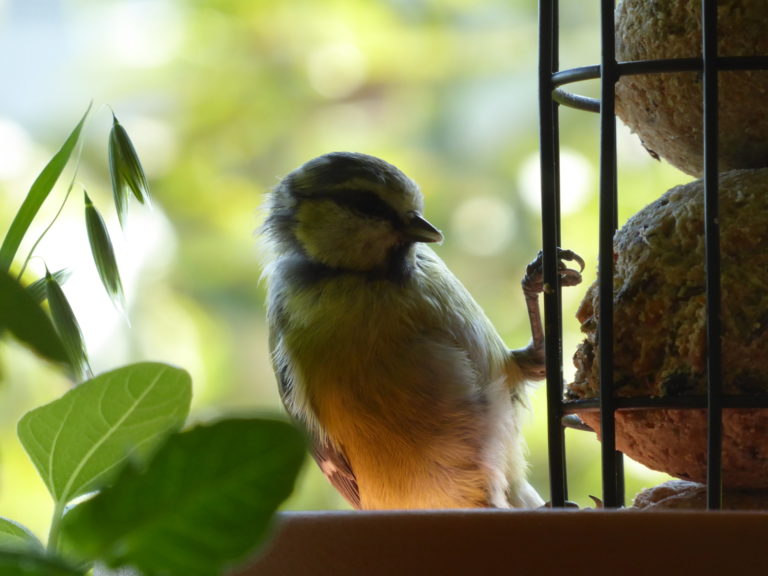
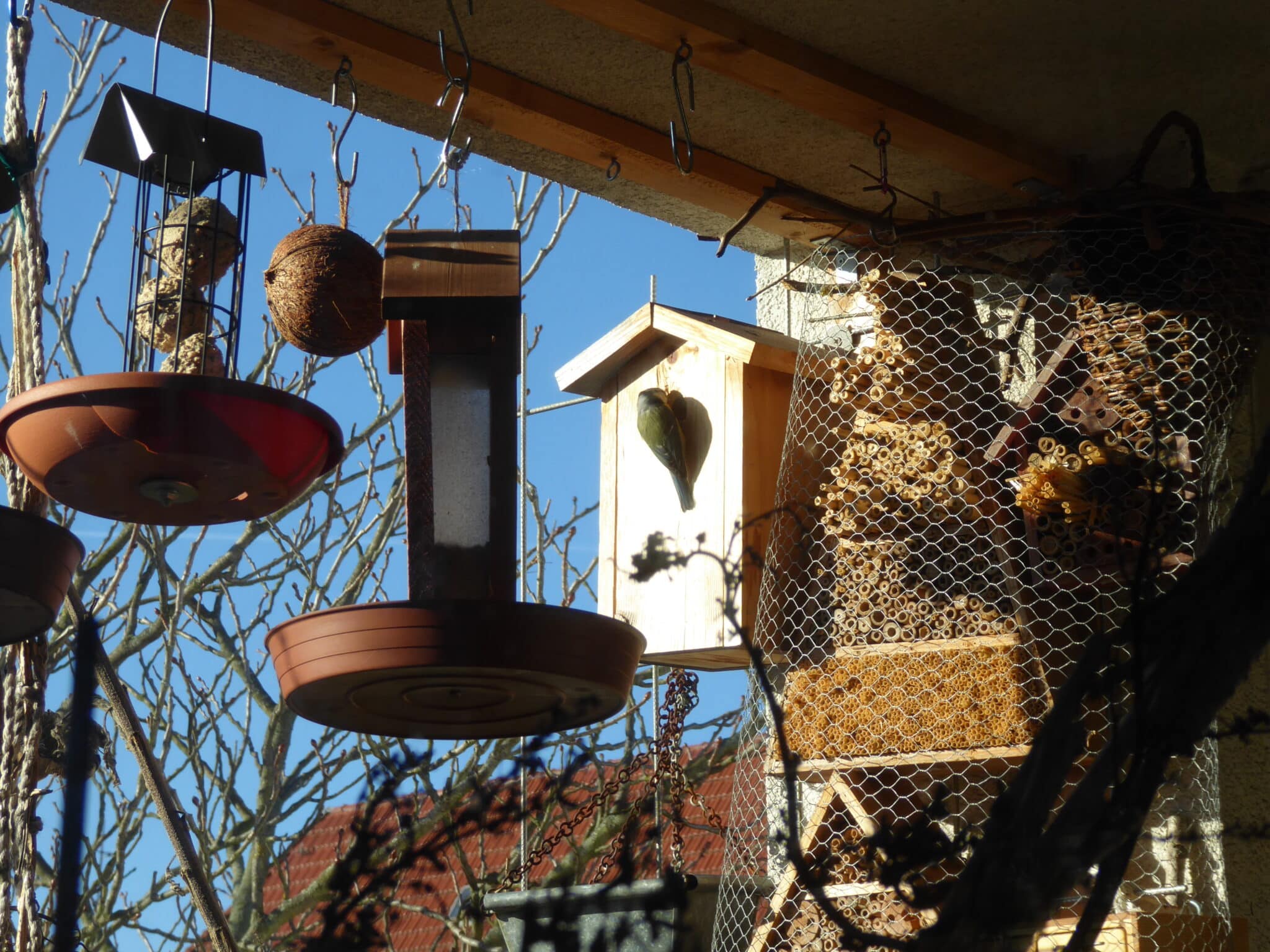
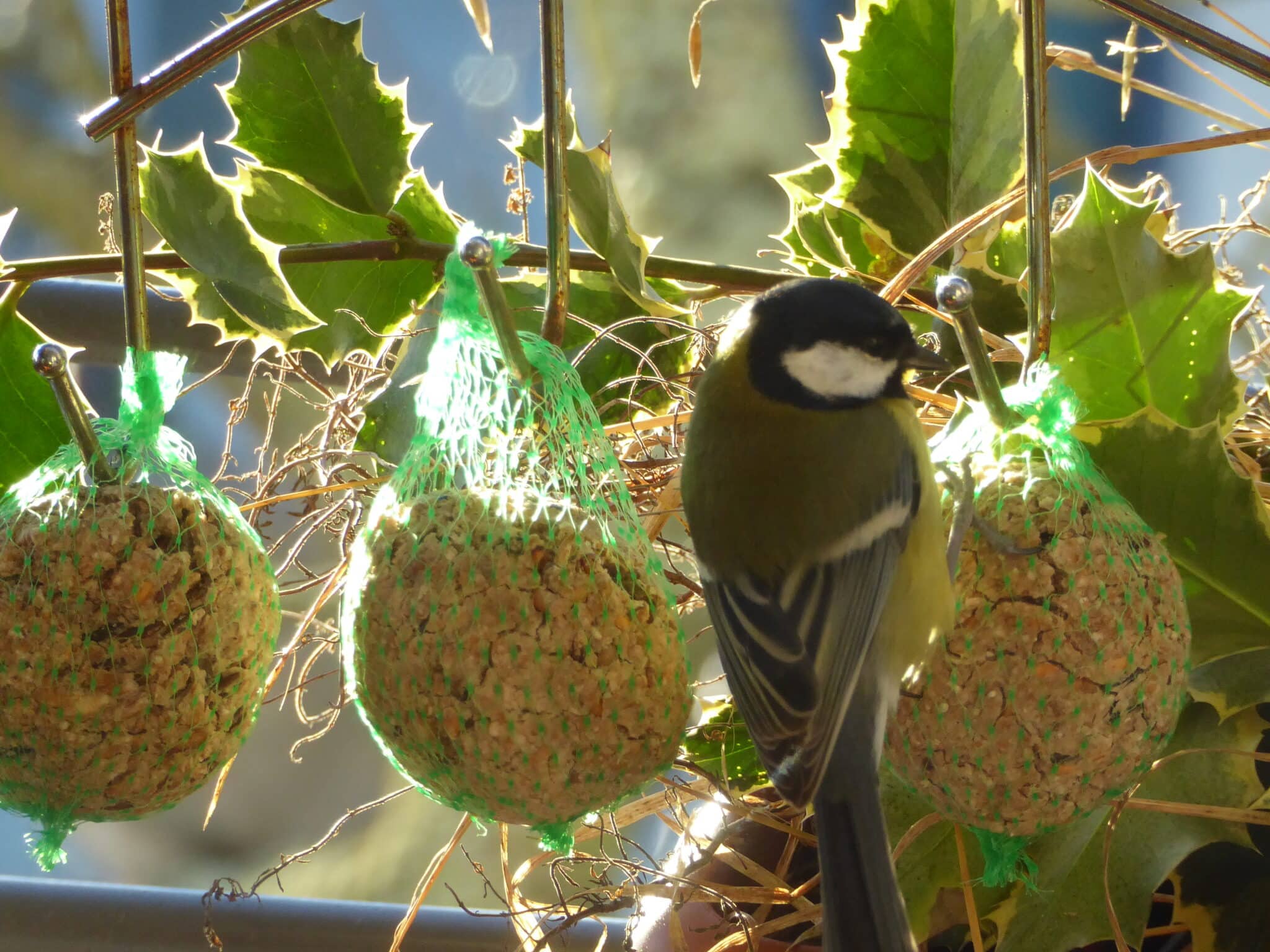


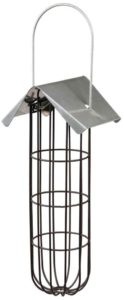


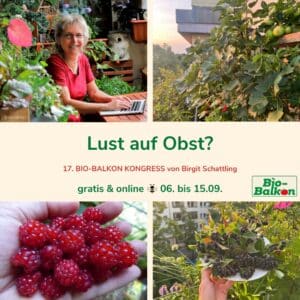




28 Responses
The important hint is missing that you should choose dumplings that do without plastic nets! You can also get them — and they should be offered in metal holders that last a long time and avoid plastic waste!
Thank you for this important information, which is now included in this article. Very good. Yes, I see it that way too. But I’m happy for every newcomer to bird feeding, even if the plastic net version is used at first for the sake of simplicity and to make feeding easier. I think once you’ve been at it long enough, you’ll switch over.
dumplings from the discount store have never been accepted (by the way, they also fall under fatty food
I have had good experiences with the dumplings from the Disconter and they are readily accepted. The sunflower seeds in particular are eaten with pleasure, but also mixed bird food.
Just as I feed my cat every day, I ritualize cleaning and refilling the bird feeders.
My year-round feeding includes netless tit dumplings with dried insects and berries, which I buy in boxes of 200. There is also a high-quality husk-free park food and a quail and chickadee mixture for the sparrows, which I enhance with a few individual seeds. For the wren and the tame robin, salt-free peanut butter with insects is fed in a hidden place.
That’s great. The birds at your place are doing really well. Great.
My bird friends on the balcony have long been fans of the plastic-free dumplings — the most popular are the high-fat energy blocks. I buy the food from https://www.vivara.de
The redstarts have been coming to breed on my balcony since 2014 and last year they gave me the magic of seeing and hearing 4 redstart babies grow up. …Amazing grace — how sweet the sound :-).
Great. Yes, Vivara has a good offer. I can feel your happiness about the young redstarts. To be able to observe something like that, to contribute to it with good feeding, that’s great luck. I’m keeping my fingers crossed for this year that the young will grow up again on your balcony — in your immediate surroundings.
What is the best food for blackbirds? I have a lot of them in the darts. Just like woodpeckers and magpies?
Blackbirds are pure soft food eaters. They don’t like hard grains at all. They like oat flakes, poppy seeds, bran and fruit such as pears and apples. They find raisins and oat or wheat flakes mixed with oil particularly tasty. Woodpeckers are very fond of tit dumplings. I have observed this in my own home, and other readers also report this time and again. Woodpeckers also like peanuts. Magpies are omnivores and eat sunflower seeds, hemp and poppy seeds. They don’t come near the feeder, but eat from the ground.
Hello, I mix seeded oat flakes with coconut oil, sometimes also with sunflower oil. My blackbirds also like to eat raisins and also
the tits love it. Is it okay to use sunflower oil? Kind regards, Gina
Dear Gina! Sunflower oil is totally fine. I think it’s great that you mix the bird food yourself. That way you can influence exactly what they eat and notice what they like. Blackbirds always like raisins, they leave other things behind. It’s great that you feed and how you feed.
This year I started mixing healthy oatmeal with sunflower oil, peeled sunflower seeds and mealworms and I needed at least 6 kg of oatmeal per week. Now I have broken sunflower seeds, also for the offspring, but they don’t like it. Tits, starlings, robins, great spotted woodpeckers, magpies, jays and blackbirds have been fed throughout the winter
Dear Cornelia, I know that here too, that the birds (and the squirrels) “chow down” on certain food and get used to it. When they change, they take much less, then I switch back to the original, familiar food. Kind regards Birgit
Recently I’ve been getting a great spotted woodpecker on my balcony. Even when I’m sitting on the balcony. A tit dumpling is hanging. He also pecks at it. But he also comes onto the balcony where there is a mixture of seeds for tits, nuthatches etc. Every now and then I’m afraid of the woodpecker or his beak.
Dear Dorothee, that’s great. Great spotted woodpeckers are really beautiful birds. You can be proud of yourself and your balcony that they are honoring you. There is no need to worry. You don’t need to be afraid. I have never seen an aggressive great spotted woodpecker. Surely you will have noticed when you move, when you go to the door, that it flies away. Or is it different for you? I always get some that are totally shy. They go to the fat balls, to the feeders with unpeeled sunflower seeds, to the insect nesting aids. They are totally shy here. As soon as they notice the slightest movement, they are gone. Enjoy your shiny visitor. It’s not that often that they grace balconies. Kind regards Birgit
Still looking for a “varied recipe” for granivores.
Wheat, rye, dari, milo, maize meal and negro seed are not accepted by “my birds”, however.
Tit dumplings without netting, from the feed shipper, usually arrive as flour because they are rolled through during shipping. Since then, I have been making them myself, using my own recipe, as food for soft feeders, and feed them all year round
approx. 100 kg.
Greetings
Mix rolled oats and coarse meal with rapeseed oil, stir only gently, it must not stick together. This can be done very quickly in a pot without much effort or loss of time. The oil does not need to be heated, just stir. Stir in the goodies: Raisins, apple pieces, sunflower seeds, chopped peanuts and hazelnuts, slivered almonds, pine nuts, coconut flakes, barberry berries, cranberries or seeds such as spinach seeds. There is no waste and you have a clear conscience because the nets are not dangerous for any bird. Please report back when you get the chance to see how it is received. Kind regards Birgit
Hello Mrs. Schattling,
I came across your article while looking for summer fat balls. I feed around 25 tit dumplings and approx. 1.5 kg of scattered food including sunflower seeds every week. My “guests” several times a day are two great spotted woodpeckers, around 20–25 tits (great tits, blue tits and long-tailed tits), various bullfinches, nuthatches, blackbirds, finches, robins, wrens and also two squirrels (I live right next to the forest). The latter have their own feeder, which is obviously not enough. All of them also use the two feeders for the scattered food. It’s a lively hustle and bustle and you can say that hunger also unites the animal world. No one drives the others away, with the exception of the squirrels of course. But they are obviously learning too.
However, I have a problem with the tit dumplings, which some birds eat by crumbling. Part of the food falls out of the feeding ring for the dumplings, which, in combination with the inevitable moisture, leads to lumps, germs and odors on the ground. Are there certain dumplings that prevent this problem from occurring (with or without a net)? I certainly wouldn’t want to do without the dumplings. Do you have any ideas? Many thanks in advance for your reply.
Best regards
Klaus Presch
Dear Mr. Presch,
I know this problem. As an alternative to tit dumplings, the more advanced can do without tit dumplings. Cut a block of vegetable fat into cubes and place these cubes in the feeders. All the birds, including the crows, help themselves to them.
Another option is to mix rolled oats and coarse meal with rapeseed oil, stir only gently, it must not stick together. This can be done very quickly in a pot without much effort or loss of time. The oil does not need to be heated, just stir. Stir in the goodies: Raisins, apple pieces, sunflower seeds, chopped peanuts and hazelnuts, slivered almonds, pine nuts, coconut flakes, barberry berries, cranberries or seeds such as spinach seeds.
You might want to try it out.
But they write that they don’t want to do without fat balls. I like to use these without netting https://www.amazon.de/Lyra-Pet-Sommerknödel-Ganzjahresknödel-Meisenknödel/dp/B0108G1O78/ref=as_sl_pc_qf_sp_asin_til?tag=biobalkonde-21&linkCode=w00&linkId=4ba44914d1ae7c378f199a3a1b4e49c1&creativeASIN=B0108G1O78. However, I have mounted a larger flower saucer under the fat ball feeder so that the remains that fall down collect in there. Sometimes it’s enough, sometimes it sticks to the ground.
Best regards Birgit from the organic balcony
Dear Mrs. Schattling,
Unfortunately, I had to make the experience that my self-made
food becomes sour (coconut oil, sunflower oil, peeled
Sunflower, oat flakes, broken peanuts, raisins, ground hazelnuts) what am I doing wrong?
Many thanks in advance
Best regards
Moosmang
The pigeon plague should also be mentioned here, especially on balconies in the city. The pigeons not only sit on the feeders, but also peck the food out of the containers in a fluttering flight (like hummingbirds). Suitable racks should be provided for small birds to keep larger birds away.
Dear Bern, thank you for the useful addition. If pigeons discover the balcony and are not wanted or there is a ban on feeding them, appropriate measures should be taken. There will be a separate blog article on the pigeon problem, as this issue is very relevant on urban balconies. Kind regards Birgit
Hello, thank you for the great contributions… I feed oatmeal and seed mix in the bird feeder and half a coconut filled with vegetable margarine and seed mix for the chickadees … The sparrows and great spotted woodpecker also like it. 😉 My question… How do I offer the food mixed with the rapeseed oil? Loose in a flower saucer? Thanks for an answer! LG Maria
Dear Maria, in any container you have to hand. For example, a compote bowl, a low jam jar or a flower saucer. Whatever is to hand, don’t buy new. It’s great that you are feeding the birds. Have fun and best wishes Birgit
Thank you! I’ll try that! Lg
Here is a great recipe from NABU for tit dumplings, I have been making them myself for 2 years:
500 g margarine
500 g soft rolled oats
200 g wheat flour
200 g sunflower seeds
200 g vegetable oil maximum
Make the fat very soft, not liquid, add everything else and mix, add oil carefully so that the mixture does not become too soft, leave everything to cool and then form dumplings. done. Quantity: approx. 20
Thanks for the addition. I think it’s great. Kind regards Birgit